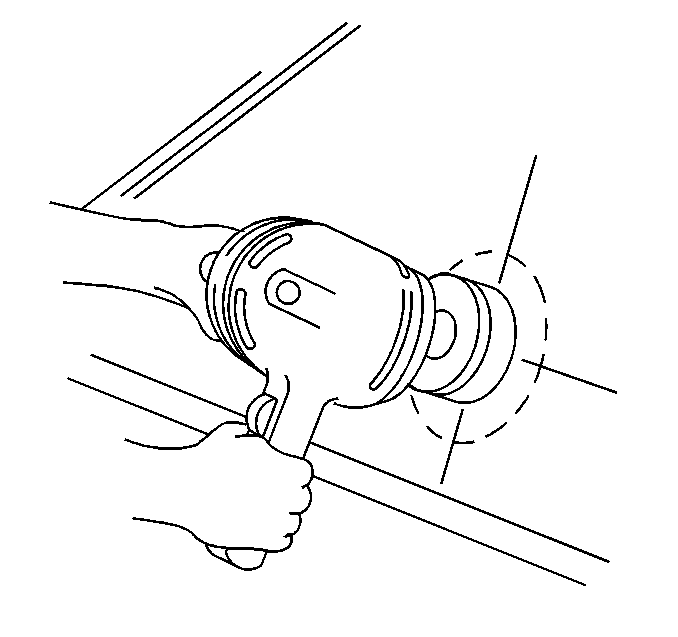Minor Scratch and Abrasion Removal
- Remove or reduce minor scratches and abrasions by following the
polishing procedure.
- Take precautions in order to prevent distortions of vision.
- Double vision may result if an attempt is made to remove deep
scratches.
Do not remove deep scratches from an area in the driver's line of vision.
Replace the glass.
- The following procedure was developed using a cerium oxide compound.
Follow the manufacturer's directions when any other materials are used.
Recommended Equipment
| • | A low speed (600-1300 RPM) rotary polisher |
| • | A wool felt, rotary polishing pad 7 mm (3 in) in
diameter and 51 mm (2 in) thick |
| • | Powered cerium oxide mixed with water |
| | This is the abrasive compound. |
| • | A wide mouth container in order to hold the abrasive compound |
Polishing Procedure

- Mix at least 44 ml
(1.5 oz) of cerium oxide with enough water in order to obtain a creamy
consistency.
| • | If the mixture is too thick the mixture will cake on the felt
pad more quickly. |
| • | If the mixture is too runny, more polishing time will be needed. |

- Draw a circle around the
scratches on the opposite side of the glass with a marking crayon or the equivalent.
- Draw a line directly behind the scratches in order to serve as
a guide for locating the scratch while polishing.
- Cover the surrounding area with masking paper in order to catch
the drippings or the splattered polish.
- Dip the felt pad attached to the polisher into the mixture.
| • | Do not submerge the pad. |
| • | Do not allow the pad to stay in the mixture as the mixture may
loosen the bond between the pad and the metal plate. |
- Polish the scratched area.
When polishing the scratched area, note the following conditions:
| • | Agitate the mixture as often as needed in order to maintain the
creamy consistency of the compound. |
| • | Use moderate but steady pressure when applying the polish. |
| • | Hold the pad flat against the glass. |
| • | Use a feathering-out motion. |
| • | Dip the felt pad into the mixture every 15 seconds in order
to ensure that the wheel and the glass are always wet during the polishing
operation. |
| • | A dry pad causes excessive heat to develop. |
| • | Keep the pad free of dirt and other foreign substances. |


